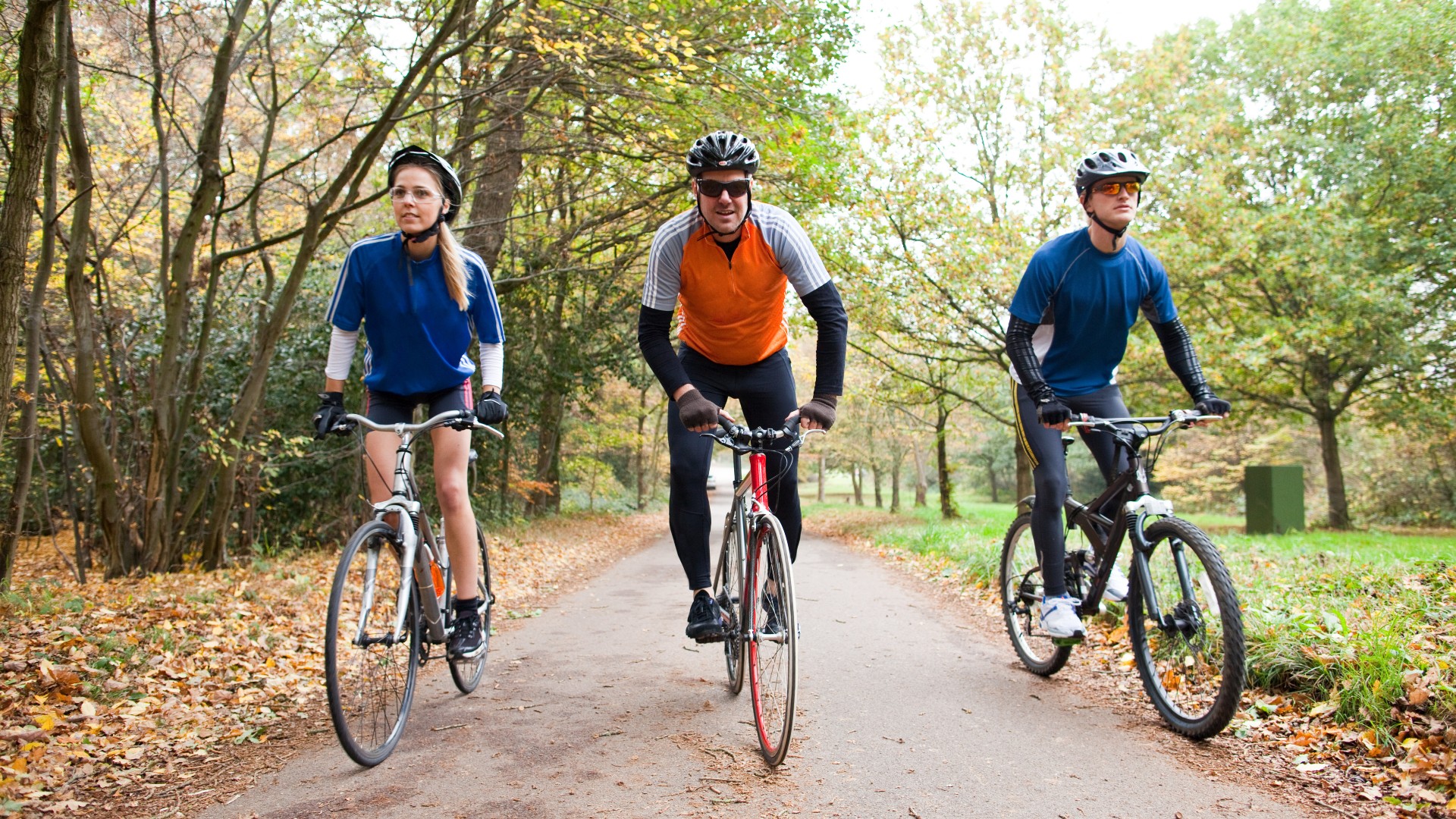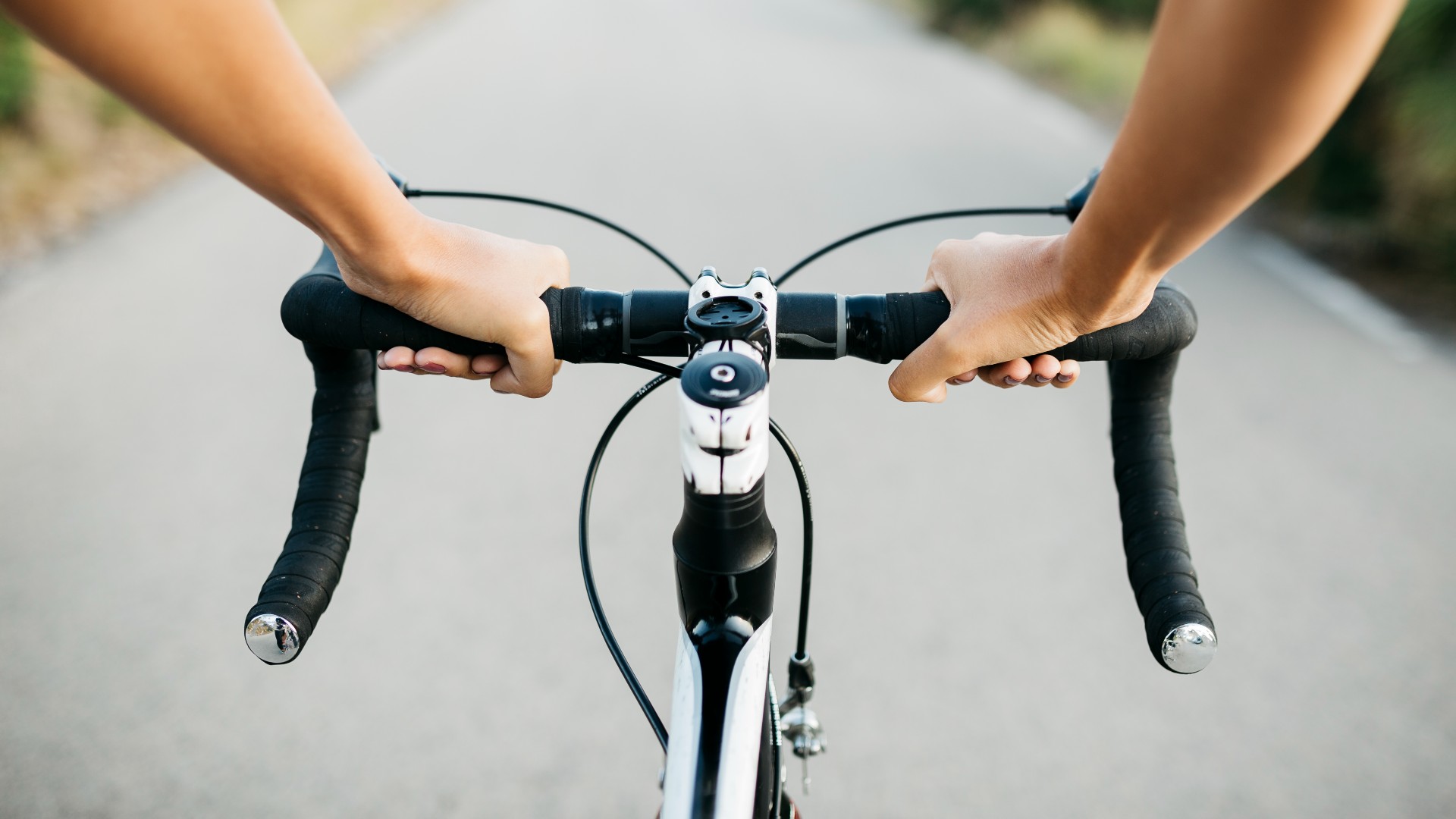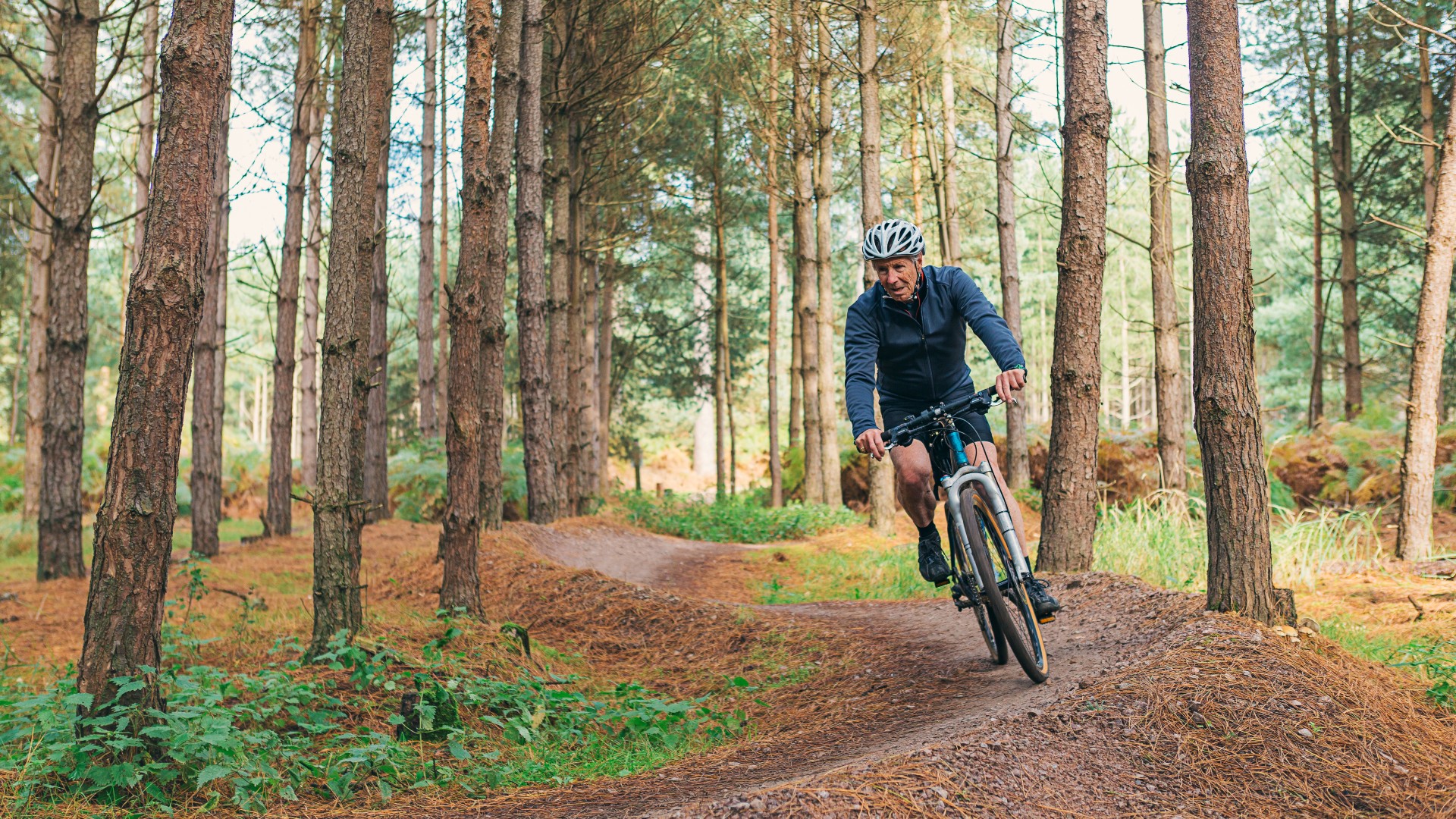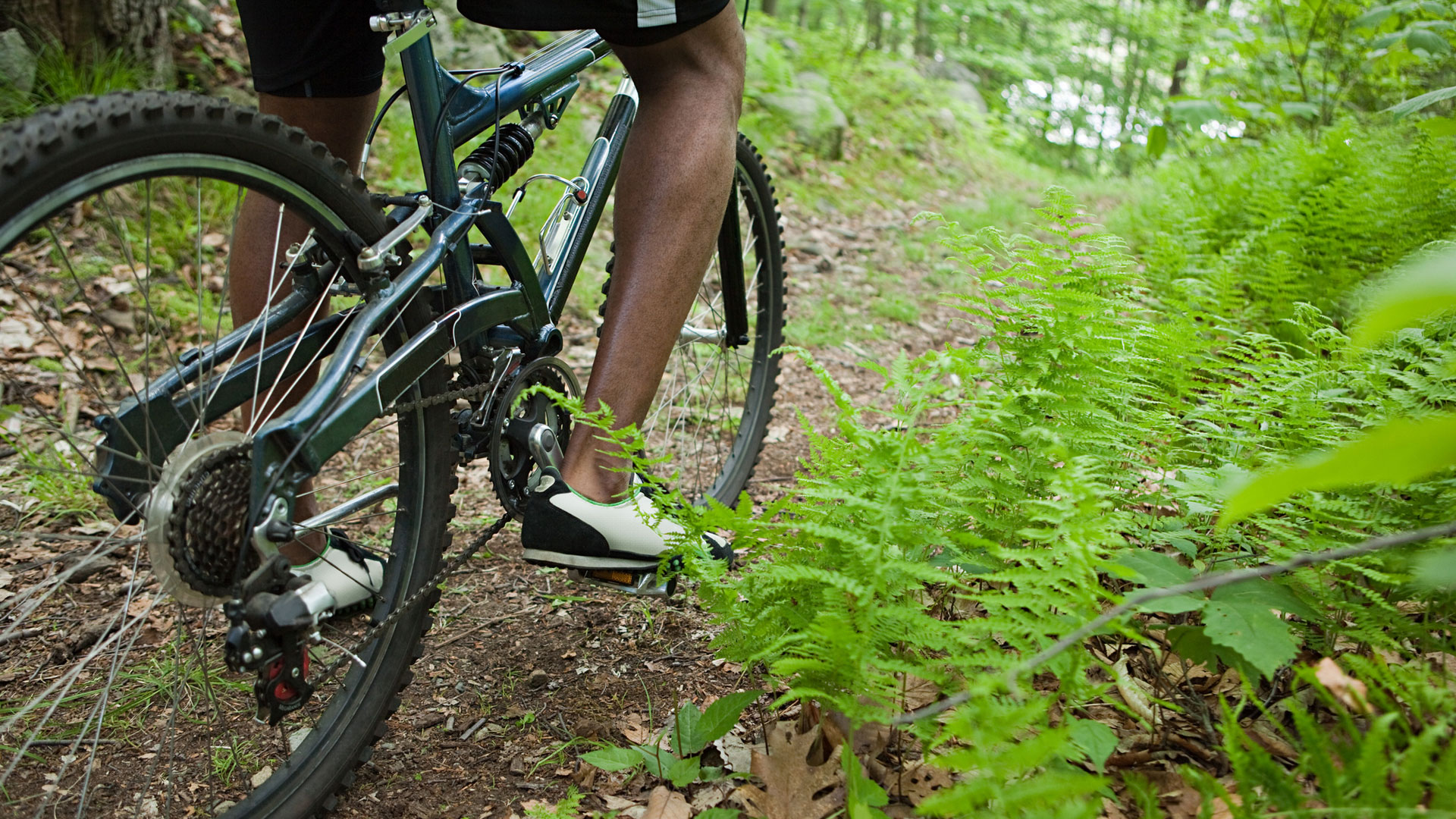Does cycling build muscle?
We answer the question ‘does cycling build muscle?’ and find out how to use this popular sport to improve body composition

Does cycling build muscle? It does, but if big muscles are your main goal, you might want to include other types of resistance training to your fitness program, too.
One of the great things about cycling is whether you do it outdoors or on one of the best exercise bikes, it's a great way to stay fit and train the cardiovascular system for all ages, specialist physiotherapist Damien Kelly told Live Science.
“Its lack of impact is very kind to the joints in the body, while the settings on bikes, as well as route selection, mean cyclists can put in as much or as little effort as they want.
“A cycle can be anything from a tough hill climb for the keen enthusiast right down to a gentle flat easy pedal in the park or on a stationary machine for those that want to take it a little easier.”
Read on to find out more about the physical benefits of cycling and how it can build muscle.
Does cycling build muscle?
Cycling can be an effective way of building muscle in your legs, says Kelly, director of Physical Health Physiotherapy Clinic in the U.K. and physiotherapist in Formula 1, professional golf and pro rugby.

Damien Kelly (MSc. MMT. MCSP. MACP. CSCS) is a specialist physiotherapist working in Formula 1, professional golf and pro rugby. He is also Director of Physical Health Physiotherapy Clinic based in Surrey, U.K. His areas of expertise include musculoskeletal injuries, sports performance, and rehabilitation.
“The reason for this is that when resistance is applied to the action of the muscles (which will occur when pedaling), then micro-tears will occur. In a process called hypertrophy, the body responds by increasing the size of the existing muscle fibers and also adding new ones.
“As a result, the muscles get bigger and stronger. To target this process when cycling, the greater the resistance applied to the muscles, the more likely hypertrophy is going to occur.”
Kelly further explains how cycling works and impacts the body: “Cycling is primarily an aerobic, cardiovascular exercise. It requires the heart and lungs to work hard to deliver oxygen rich blood to the muscles in the lower limbs predominantly, so that they can do their job and propel the cyclist forward. This system is reliant on oxygen and is typically used in slower paced, endurance type efforts.
“However it is possible to alter your cycling to give more of an anaerobic benefit as well, i.e. increase the body's ability to create and use energy to provide power without the presence of oxygen, by burning glucose instead to form adenosine triphosphate (ATP).
“The anaerobic system is capable of producing lots of power very quickly but is not sustainable for long due to a build-up of lactic acid and other by-products. This system is used in fast, high-power activities such as weight lifting, sprinting and cycle-sprints.
“To use the anaerobic system while cycling, you can train using short high effort intervals, do hill climbs, or increase the resistance for short periods on a stationary bike.”
A study published in Movements and Sports Sciences journal found that including sprint and resistance training with regular cycling could temporarily increase your metabolism and build muscle, and more muscles mean you burn more calories, even at rest — so it’s great for body fat loss or weight management, too.
- Related: Do exercise bikes burn belly fat?

Which muscles does cycling strengthen and build?
From both a speed and strength perspective, cycling is great for building muscular structure while targeting cardiovascular endurance — it works many muscles in the body, helping to improve tone and definition.
The main muscles that benefit from cycling are those in the legs, Kelly says. “When seated and performing the down stroke of pedaling, the main muscles being used are the quadriceps (front of thighs), calf muscles and glutes. On the upstroke, the hamstrings (back of thighs), and hip flexors (front of hips) will be working hard against resistance.”
How can you speed up the muscle building process?
Much in the same way as you can’t rack the same weight every gym session and expect to see change, you need to push your muscles to fatigue in order to see growth when cycling.
If you want to speed up muscle building from cycling then you’ll need to train frequently — at least three to four times a week — with repeated short, high intensity, high resistance efforts, targeting the anaerobic system, says Kelly. “Long, low intensity rides will be less effective for muscle building.”
“The main reason high intensity exercise will build muscle will be down to the high resistance the muscles need to work against. This becomes an anaerobic effort as your body will call on this energy system to produce this high level of power to overcome the resistance. This in turn will give the muscles the ability to overcome resistance, and, if done repeatedly, will lead to muscle growth and increased strength.”

“Flat cycling is certainly the easiest option when starting out,” says Kelly. “The ride can go as slow or fast as you like and the training effect will very much depend on how much effort you put in.
“However things change when hills are introduced as this can provide significant resistance to the leg muscles. This is a very effective means of making the cycle tougher and should be introduced gradually in the less experienced cyclist.”
How does it compare with other exercises for muscle-building?
“Cycling in itself can build muscle — the evidence can be seen when watching elite riders in the Tour De France working hard on a hill climb or sprint race,” says Kelly.
“However it’s not as effective as traditional strength training exercises performed with weights in a gym. This is because traditional weights can provide greater resistance in a more consistent and trainable way when compared with cycling.
“But there’s no need to choose between the two. Both cycling and weights-based resistance training can work hand in hand and complement each other.”
- Related: Exercise bike benefits
What are the pros and cons of cycling to build muscle?
Pros:
- Non-weight bearing
- Highly adaptable
- Gets you outdoors
- Cardiovascular and strength benefits
- Can be done indoors on a stationary bike

Cons:
- Predominantly lower body workout
- Not the first choice if muscle building is the main goal
- Could be pricey if you buy a high performance bike
How to avoid injury during cycling
To reduce the risk of injuries, it’s important that all elements are increased gradually, a fitness principle known as progressive overload.
“This includes the level of resistance, the frequency of training, time on the bike and incline of a slope,” says Kelly. “A sudden or excessive jump in any of these areas can lead to a risk of pain or injury in the lower limbs.
“If you are serious about ramping up the miles, then it’s highly recommended to get a bike fitting carried out by a specialist to ensure the bike is properly set up to suit your body.”
Sign up for the Live Science daily newsletter now
Get the world’s most fascinating discoveries delivered straight to your inbox.

Maddy Biddulph is a freelance health and fitness journalist with over 26 years of experience working for consumer media in the US and UK. As a Level 3 personal trainer and weight loss advisor she is used to trying out and reviewing the latest health and fitness products. At Maddy Biddulph Personal Training, she runs one-to-one and small group sessions, as well as group exercise classes. She specializes in mobility work with seniors and runs regular chair workouts in her hometown of Oxford.










